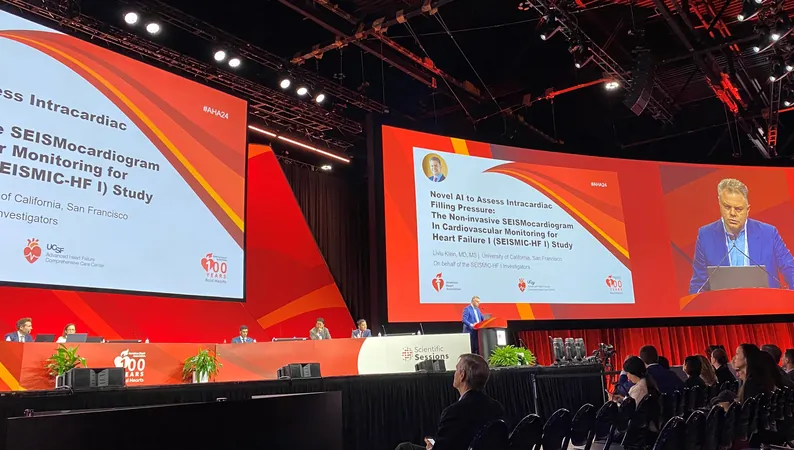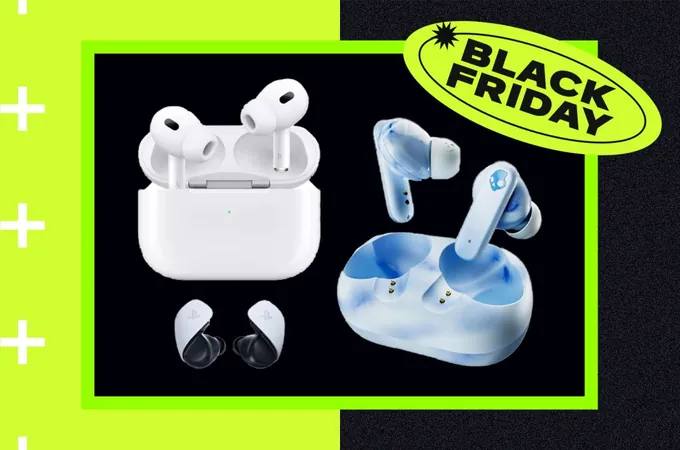
Breakthrough AI Device Revolutionizes Heart Failure Monitoring!
2024-11-25
Author: Daniel
CHICAGO, IL—A groundbreaking noninvasive sensor that employs artificial intelligence (AI) is emerging as a potential game-changer for monitoring pulmonary capillary wedge pressure (PCWP) in patients experiencing heart failure with reduced ejection fraction (HFrEF).
This innovative device could replace traditional invasive procedures, offering a safer and more patient-friendly alternative according to new observational data.
Historical Context
Historically, implantable pulmonary artery pressure (PAP) sensors have proven advantageous for heart failure management, significantly enhancing patient care. However, the associated costs and invasiveness of procedures have limited their widespread use.
The CardioMEMS system, launched in 2014 and later expanded in 2022 to additional patient classes, represents a milestone in this technology. Its competitor, the Cordella sensor from Endotronix, also gained FDA approval for select heart failure patients earlier this year.
Current Monitoring Techniques
While various noninvasive techniques like patient questionnaires and 'smart' scales have shown the potential to predict hospitalizations, these methods fall short of delivering the precise hemodynamic measurements provided by implanted sensors.
The emergence of external sensors and patches that utilize AI technology marks a new frontier, enabling healthcare providers to anticipate heart failure exacerbations more effectively and reduce urgent hospital visits for patients.
Study Findings
Dr. Liviu Klein from the University of California San Francisco presented compelling findings from the SEISMIC-HF I study at the American Heart Association 2024 Scientific Sessions.
He emphasized the importance of noninvasive monitoring tactics, specifically noting how PCWP serves as a critical hemodynamic indicator for managing patients, especially those grappling with postcapillary pulmonary hypertension.
"The integration of advanced noninvasive sensor technologies with machine learning could transform how we monitor these pressures," Klein stated.
Study Methodology
The study involved 310 HFrEF patients (average age 61.1; 62% male) slated for right heart catheterization (RHC) procedures across 15 U.S. sites from July 2023 to June 2024.
Researchers collected simultaneous data from the new sensor, CardioTag, which measures respiratory and cardiovascular metrics using seismocardiography, photoplethysmography, and ECG data.
The results then feed into a machine learning algorithm designed to estimate PCWP and assess patient congestion.
Results and Accuracy
The findings revealed an impressive correlation between the CardioTag readings and RHC data. The algorithm demonstrated a mean difference of just 1.04 mm Hg compared to RHC measurements, indicating a robust level of accuracy and consistency.
Notably, the results remained uniform across various patient demographics, including sex, race, obesity levels, and comorbidities such as hypertension and coronary artery disease.
Potential Impact and Future Research
"This research marks a potential turning point in how healthcare providers can remotely guide the management of heart failure patients using advanced hemodynamic data," Dr. Klein remarked.
However, he also cautioned that further studies will be essential to broaden the application of these findings and explore other essential hemodynamic factors besides PCWP.
Expert Insights
In a follow-up discussion, Dr. Jessica Golbus from the University of Michigan highlighted that the CardioTag’s performance was comparable to the established CardioMEMS system.
Still, she raised a critical question: "Can this technology not only predict clinical outcomes but also intervene in a way that meaningfully alters those outcomes?"
Conclusion and Anticipation
As the medical community eagerly anticipates answers to these questions, the potential of AI-driven devices like the CardioTag to change the landscape of heart failure monitoring and management is increasingly within reach.
Stay tuned as we track further developments in this exciting field that could redefine patient care as we know it!





 Brasil (PT)
Brasil (PT)
 Canada (EN)
Canada (EN)
 Chile (ES)
Chile (ES)
 España (ES)
España (ES)
 France (FR)
France (FR)
 Hong Kong (EN)
Hong Kong (EN)
 Italia (IT)
Italia (IT)
 日本 (JA)
日本 (JA)
 Magyarország (HU)
Magyarország (HU)
 Norge (NO)
Norge (NO)
 Polska (PL)
Polska (PL)
 Schweiz (DE)
Schweiz (DE)
 Singapore (EN)
Singapore (EN)
 Sverige (SV)
Sverige (SV)
 Suomi (FI)
Suomi (FI)
 Türkiye (TR)
Türkiye (TR)